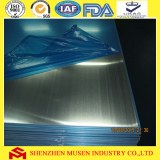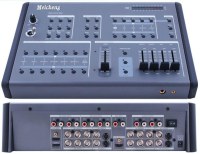Organic Membrane
The organic membrane is a material having a selective separation function, and when there is a driving force on both sides of the membrane (such as a pressure difference, a concentration difference, a potential difference, etc.), the raw material component selectively permeates the membrane. Separation, classification, concentration and purification of different liquid or gas components can be achieved by selective separation of membranes. Since no morphological changes are required, membrane separation techniques are particularly suitable for separation processes without phase change and chemical change. Widely used in medicine, biology, food, petrochemical, energy, water treatment and other fields, resulting in huge economic and social benefits.
Organic Membrane JIUWU Organic Membrane Filters
Membrane clean agent table
Jiangsu Jiuwu High tech Co., Ltd. was established in Nanjing, Jiangsu in 1997 and is the first listed company in the domestic ceramic film industry. With over 20 years of experience in membrane system...
Adsorbent
The adsorption coupled membrane process is one of the most promising technologies for lithium extraction from salt lake brine, with advantages such as high efficiency, energy conservation, environmental ...
Organic Membrane
We have organic membranes with a wide range of pore sizes to different applications, from removing salt to filtering large particulates.
Organic Membrane Module
Organic membrane modules may contain different membrane configurations, including spiral and hollow fiber membrane.
Organic Membrane Machine Lab & Pilot
In order to meet the scientific requirements of scientific research institutes andenterprises in the early research and development of feed liquid amplification, and we specially design and develop sm...
Organic Membrane Filtration System
OMS skid-mounted refers to a form of overall combination of equipment frame and whole equipment. It means that a group of equipment is fixed on the chassis and can be used after moving. It is not nece...
Membrane materials are the basis and core of membrane technology. The properties and chemical structure of membrane materials play a decisive role in membrane separation performance. There are many types of membranes according to different classification methods.
a. The pore size of the membrane
According to the size of the membrane pore size or the size of the retained particles, it can be divided into Microfiltration (MF), Ultrafiltration (UF), Nanofiltration (NF) and Reverse Osmotic (RO).
b. The material of the membrane
The material of the membrane determines the chemical properties of the membrane, which determines the main chemical properties such as hydrophilicity, anti-contamination, acid and alkali resistance, grease resistance, organic solvent resistance, high-temperature resistance and sunlight resistance.
It is stronger the hydrophilicity of the membrane, the higher the anti-contamination property; It is better the chemical stability of the membrane, the stronger the acid and alkali resistance and the stronger the oxidation resistance, the better the durability of the membrane.
Depending on the material of the membrane, the membrane can be divided into an inorganic membrane and an organic membrane.The organic membrane is made of high molecular materials are processed and compounded, such as polyvinylidene fluoride, polyvinyl chloride, polyethersulfone, polysulfone, polypropylene, polyethylene, polyacrylonitrile, aromatic polyamide, cellulose acetate, and the like. The organic membrane has a wide range of selectivity, and can be selectively made into various membranes according to different uses, different properties, and different molecular cutting amounts, but when the raw materials have strong acid, alkali, strong corrosive, high temperature and high concentration organic pollution characteristics. At the time, the organic membrane is prone to corrosion and clogging of the membrane pores. The main features of the organic and inorganic membranes are compared as shown in the following table:
c. The configuration of the membrane
The configuration of the china membrane is related to its manufacturing process, and is generally classified into a hollow fiber membrane, a flat membrane, a tubular membrane, and a spiral membrane.
Membrane Technology
MF Membrane Technology
Microfiltration (commonly abbreviated to MF) is a type of physical filtration process where a contaminated fluid is passed through a special pore-sized membrane to separate microorganisms and suspended particles from process liquid.
UF Membrane Technology
Ultrafiltration (UF) is a variety of membrane filtration in which forces, such as pressure or concentration gradients, cause separation through the semi-permeable membrane. High molecular weight suspe...
NF Membrane Technology
Nanofiltration (NF) is a relatively recent membrane filtration process used most often with low total dissolved solids water such as surface water and fresh groundwater, with the purpose of softening ...
RO Membrane Technology
Reverse osmosis (RO) is a water purification technology that uses a semipermeable membrane to remove ions, molecules, and larger particles from drinking water.In reverse osmosis, an applied pressure i...
Localisation : No. 9 Yuansi Road, Pukou, Nanjing, Jiangsu, China , 211808 nanjing,
Personne à contacter : Ding Claire, 025 58109595








